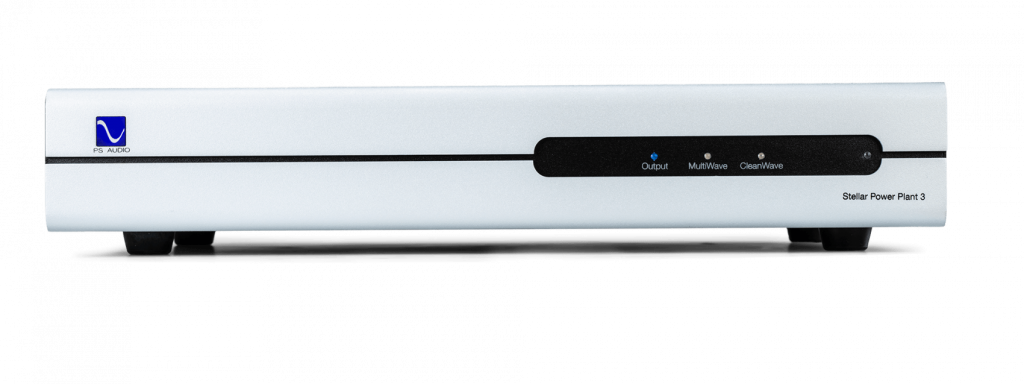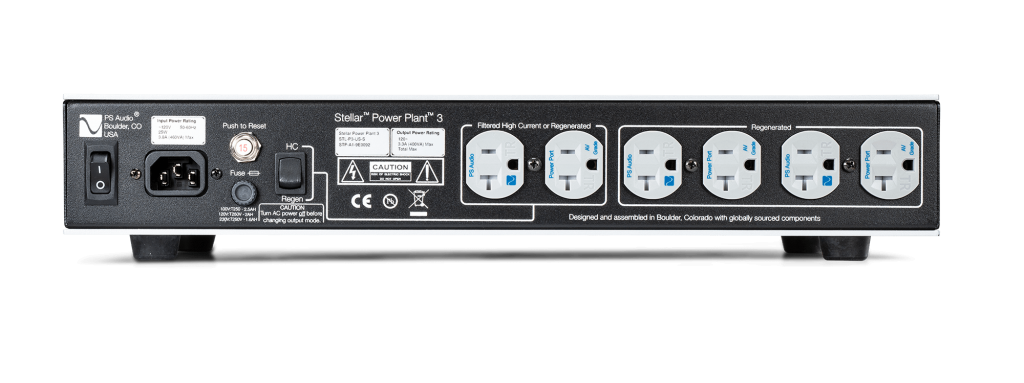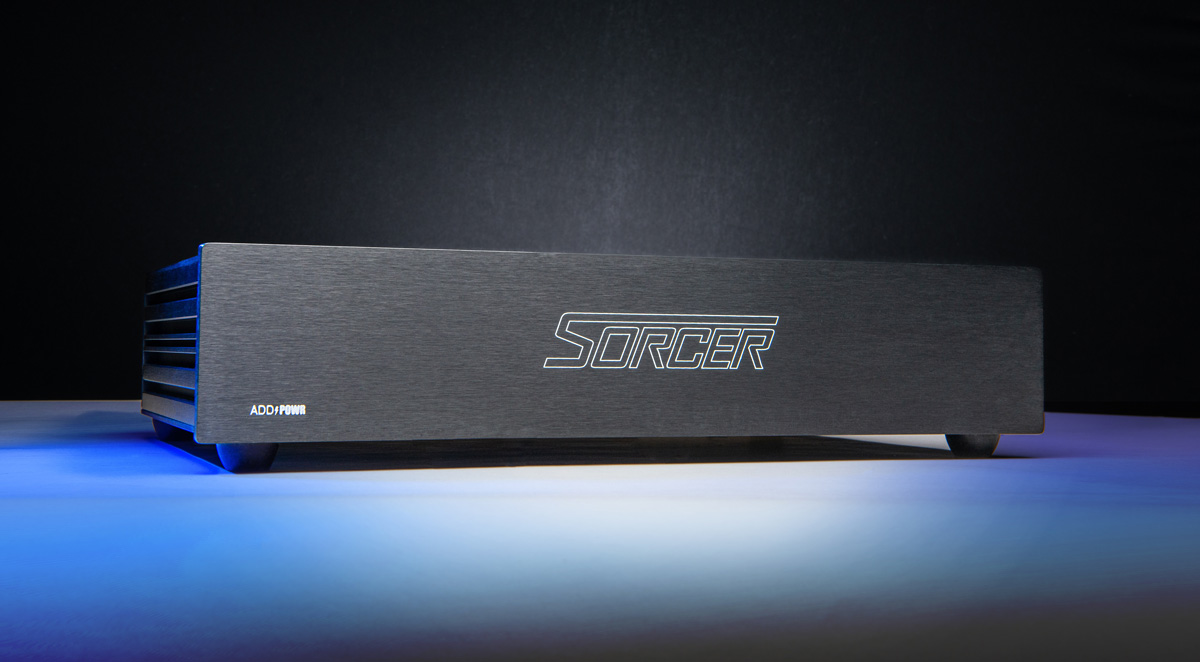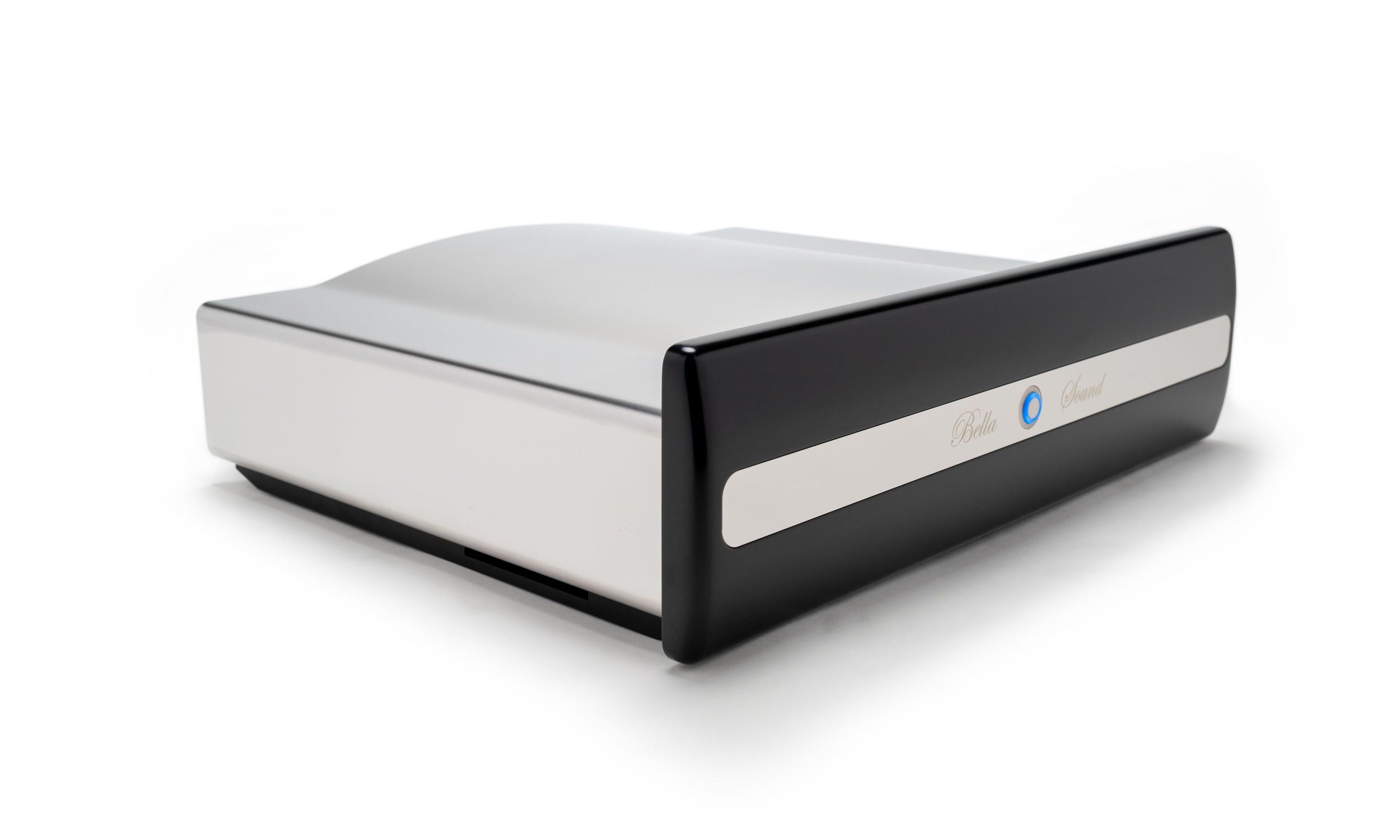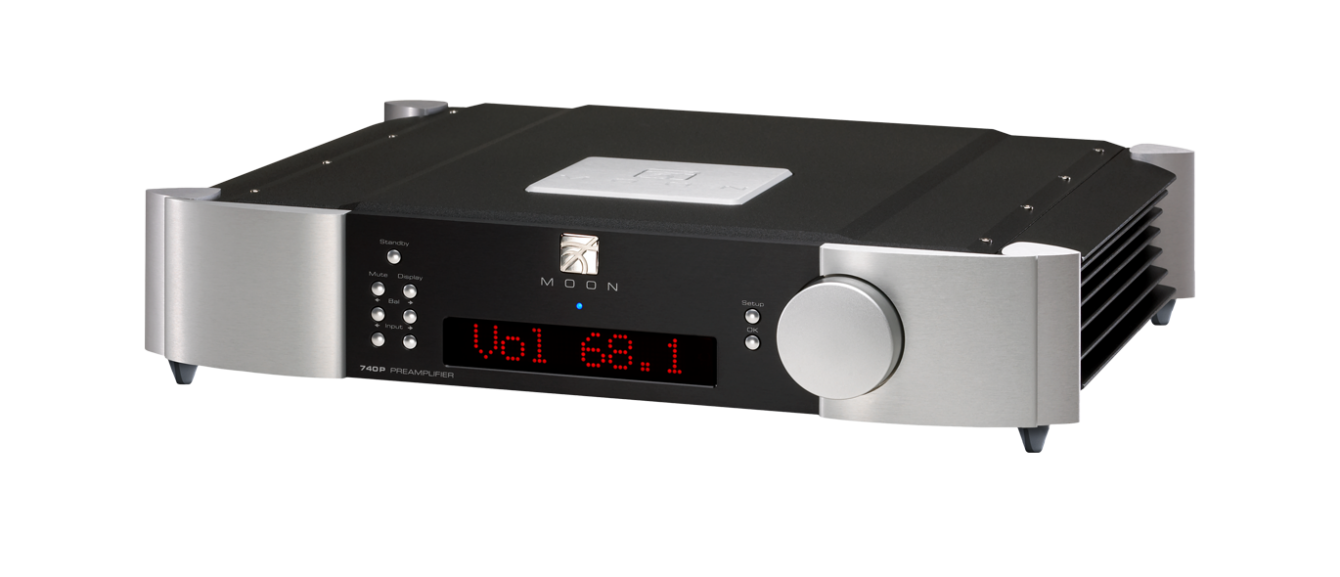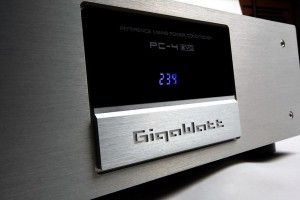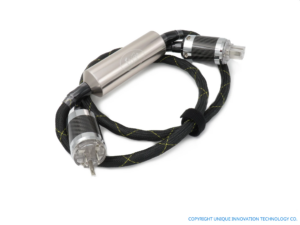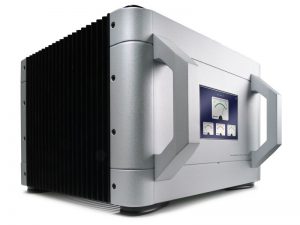There was hum in my system! It was the dreaded 60 cycle hum. So was it caused by a faulty power supply, or a power transformer too close to a high gain amplifier? No, more likely the progenitor of this problem was electromagnetic coupling somewhere in the cabling. Experimentation narrowed my search for the source back to my preamp. As a rule, if the level of hum doesn't change with changes in volume, then the problem is likely in a power cord or interconnect. In this case, swapping the power cord greatly reduced the audibility of the hum.
Hum, buzz, and static are probably the easiest noise issues to identify, but there are others, EMI and RFI among them, much harder to sort out. This is partly because they are more difficult to pinpoint when present but, interestingly enough, are very noticeable when removed. Anyone faced with system optimization will ultimately need to address noise issues and solutions. Noise masking of program material will increase fatigue, reduce dynamic range, waste amplifier power, increase distortion, and generate unnecessary heat. Noise can alter amplitude and phase, and inject spurious frequencies.
These are just some of the things that power conditioners are, ideally, designed to deal with, some more successfully than others. Power conditioners can, while removing noise, also change the character of your system, not necessarily for the better. As with any component, it is always best to audition a power conditioner in your own system before making your purchase.
Something Completely Different
While exploring power conditioner options I was intrigued by the family of PS Audio PowerPlant power regenerators. Under review is the smallest of the PS Audio power regenerators, the Stellar PowerPlant 3. Being unfamiliar with power regenerators, I asked PS Audio to bring me up to speed on the technology. Paul McGowan responded.
“The PowerPlant regenerator idea came about because of my frustration and disappointment with the (then) state of the art power conditioners. They always sounded cleaner but over time, they robbed the music of life (which is normal for an inline passive filter). The problem was their added line impedance.
"What we needed was new power. Use the wall power to rebuild or regenerate new power that was not contaminated by the neighbor's simultaneous use, nor weakened by the hundreds of feet of resistive AC wiring delivering the power to my equipment. In other words, we needed to be within feet of the power generating plant.
"Seems that's a bit impractical so, the next best thing would be to design my own power generating station.
"My first idea to design a perfect AC power generator was a carbon copy of what powers our cities. A spinning, mechanical, power generator. Mine would not be spun by the fires of coal or natural gas, but instead by the very power I wanted to replace. On paper, I built an electric motor coupled to a generator like you might have on your bicycle. From it would come perfect, clean, low distortion sine waves regardless of the power quality coming in.
"That rabbit hole venture was quickly abandoned as Terri told me there's no way she'd allow a spinning noisy mechanical generator anywhere near the inside of our home. I suspected others would feel the same way.
"My second rabbit hole got me closer. A tube-based HP sinewave generator connected to a stereo power amplifier. Though kludgy and impractical, it worked and proved my idea that the best AC power in the world had to be generated. Still this wasn't all that practical, and though it proved to me the perfection of regenerated power was the answer, the small power amp I had used wasn't big enough to handle what the real problem of AC power is, peak energy demand (and regulating the output voltage).
"If you look at how equipment accepts AC power you realize it's not pretty or clean. Unlike a light bulb or electric heater, most stereo equipment gulps power in quick chunks of current. The size of these chunks can be classified on a scale, called Power Factor. A Power Factor of 1 means the voltage and current are being consumed at the same time. This is what happens with a light bulb. A lower Power Factor, say 0.7, means the current is delivered in the aforementioned chunks. The lower the number, the shorter and more aggressive each chunk. The problem with these chunks is generators are not designed to feed them, thus, when they occur the voltage levels drop, robbing equipment of much-needed power.
"A big power amplifier, for example, can be very demanding. These chunks of peak current can be as high as 50 amps, a demand that far exceeds what your home's power can supply. The net result is a loss of needed power and audio performance suffers. Which is why a regenerator like the PowerPlant is needed.
"Our designs store more energy for quick release than is available through the home's wall sockets, typically limited from 10 to 20 amps. When peak demands exceed the home's limit every 1/20th of a second, performance suffers. Add a PowerPlant to the mix and this problem goes away because PowerPlants can deliver up to 70 amps of peak current (depending on the model). Add traditional conditioners or transformers to clean the AC power and the problem gets worse, not better.
"Which is why we measure distortion on the PowerPlant's front panel. These nasty peak current demands show up as increased distortion. In fact, it's what caused the distortion in the first place.
"So, a modern PowerPlant regenerator is taking in whatever quality of power it is fed, converting that to DC, then regenerated new, low impedance, low distortion, perfect AC power."
Specifications
The Stellar PowerPlant 3s compact size (17" x 12" x 3.25") belies its heft, weighing in at over 31 pounds. The PS Audio logo on the left front panel doubles as the on/standby button. To the right is a display showing LED indicators for Output, MultiWave, and CleanWave plus an infrared remote sensor. Yes, the Stellar PowerPlant 3 comes with a remote. Around back from left to right are the master power switch, IEC type power inlet, fuse socket, circuit reset button, a regenerated/bypass switch, and six power outlets, the first two of which are switched between regenerated power or a non-regenerated filtered high current mode by the aforementioned switch. This adds the flexibility to power an amp or integrated without compromising the 300 watt continuous / 1000 watt peak regenerated power limit of this unit. Voltage regulation is <0.1%, typical output THD is <0.3%, and output impedance is <0.008 ohm.
The Output LED on the front panel glows blue when the unit is pulling up to 90% of maximum output, yellow when between 90 and 100%, and red if the maximum output is exceeded. The P3 will go into fault mode after exceeding maximum output for 30 seconds. In operation I never saw anything but blue.
The MultiWave function of the P3 increases the charge time of the output waveform by altering the peak of the sine wave. A longer changing time, occurring at the peak of the output sine wave, lowers the connected equipment's power supply ripple. The on/off toggle for this feature is on the supplied remote. I didn't hear a difference with this feature, but left it on figuring lower ripple couldn't hurt.
The CleanWave function injects a series of higher frequencies that ride on the main sine wave to help degauss connected equipment. The signal is activated from the remote and lasts for 5 seconds during which the CleanWave LED on the front panel glows blue. This is a handy function.
Setup and Listening
I placed the P3 on an aerolam shelve on the middle rack of a lead shot filled stand just below my preamp. Power was provided by a Soundstring Gen II power cord plugged into a dedicated outlet. All functions were accessible via the remote. During use, the P3 did not get hot to the touch nor did it shut off or malfunction in any way. I used the P3 with a variety of equipment, primarily preamp and source components. Once set up the P3 did its job without fuss. It was set and forget.
What is noise? The simplest definition is that noise is the sound you didn't intend to create and don't want to hear. Noise interference tends to homogenize sound. By that I mean it diminishes musical contrast and masks micro dynamic nuance, flattening perspective. It fills the spaces between the music with a sort of haze. Listen to most car stereos at 60+ miles an hour and you'll relate. A power conditioner's job is to effectively minimize these noise characteristics in a controlled environment.
Initially, I listened casually to an eclectic variety of musical selections over an extended period, to get a sense of the P3s effect on the system. I am happy to report that the P3 did not change the character of my system, only the noise level. Plus or minus, warming (rolling off high frequencies) or changing the overall perspective of system parameters can happen with some conditioners. Again, whenever possible, audition everything in your own system before committing. In my system the P3 allowed more precision and inner detail to shine through. In loud and/or very busy musical passages the sound remained composed. All this contributed to a reduction in listening fatigue. With the P3 in use, instruments and vocals stood out in relief, each carving its own space in the soundstage. On that soundstage the objects were well located in relation to each other. Ambience queues and crowd noise were more separate and distinct from the music.
Increased precision, due to noise reduction, brings out recorded detail that was not audible in a noisier environment. It broadens the soundstage, increasing the ability to localize items on that stage and to precisely hear the start and stop of notes as well as reverberant decay. This richer more lifelike presentation raises your involvement, drawing you further into the performance. But don't be fooled! Heavy filtering can throw the baby out with the bath water. Try before you buy.
The obvious conclusion
PS Audio has a winner. If you're looking for clean power, there is no way to go wrong here. One might assume that the P3 was intended for a simple system with one stereo amp or integrated and a variety of sources and it ideally fits that mold. But the P3 is more versatile than that, offering audiophiles a first rate supply of clean power for source components. As such it may just be the sweet spot in the PowerPlant range of products, offering as it does good value and excellent performance.
Stellar PowerPlant 3
Retail: $2199
PS Audio




